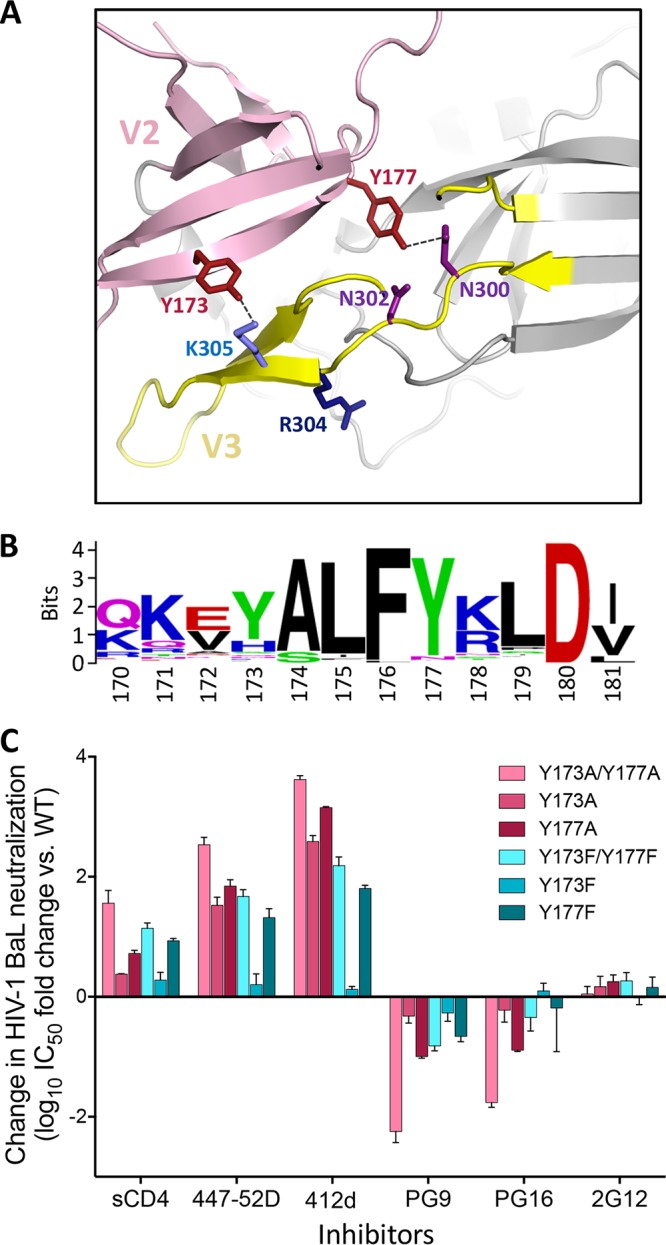FIG 1.

Critical role of two tyrosine residues in the gp120 V2 loop in modulating HIV-1 neutralization sensitivity. (A) Intramolecular interaction between the gp120 V2 loop (pink) and V3 loop (yellow) visualized in a high-resolution structure of the HIV-1 envelope trimer shown in cartoon representation (PDB accession number 4VTP). Specific residues are highlighted in stick representation. The V2 loop tyrosines Y173 and Y177 (brick red) are in close proximity to V3 loop residues K305 and N300, respectively. (B) Conservation of the C-terminal portion of the V2 loop among group M HIV-1 strains. Sequence alignment of a segment of the V2 loop region of gp120 (amino acids 170 to 181) from all the available group M HIV-1/SIVcpz isolates (Los Alamos HIV database). The height of each stack indicates the degree of conservation for each residue; the relative height of each letter within individual stacks represents the frequency of the indicated amino acid at that site. (C) Mutagenesis of the V2 loop tyrosines Y173 and/or Y177 to phenylalanine (F) or alanine (A) dramatically alters the HIV-1 neutralization profile. Pseudoviruses bearing the wild-type (WT) or mutated HIV-1 BaL Env sequence (tier 1B) were tested for their sensitivity to neutralization by a panel of inhibitors (sCD4 and monoclonal antibodies). The neutralization tests were performed using the TZM-bl assay. The data represent the mean (±SEM) from three independent experiments.
